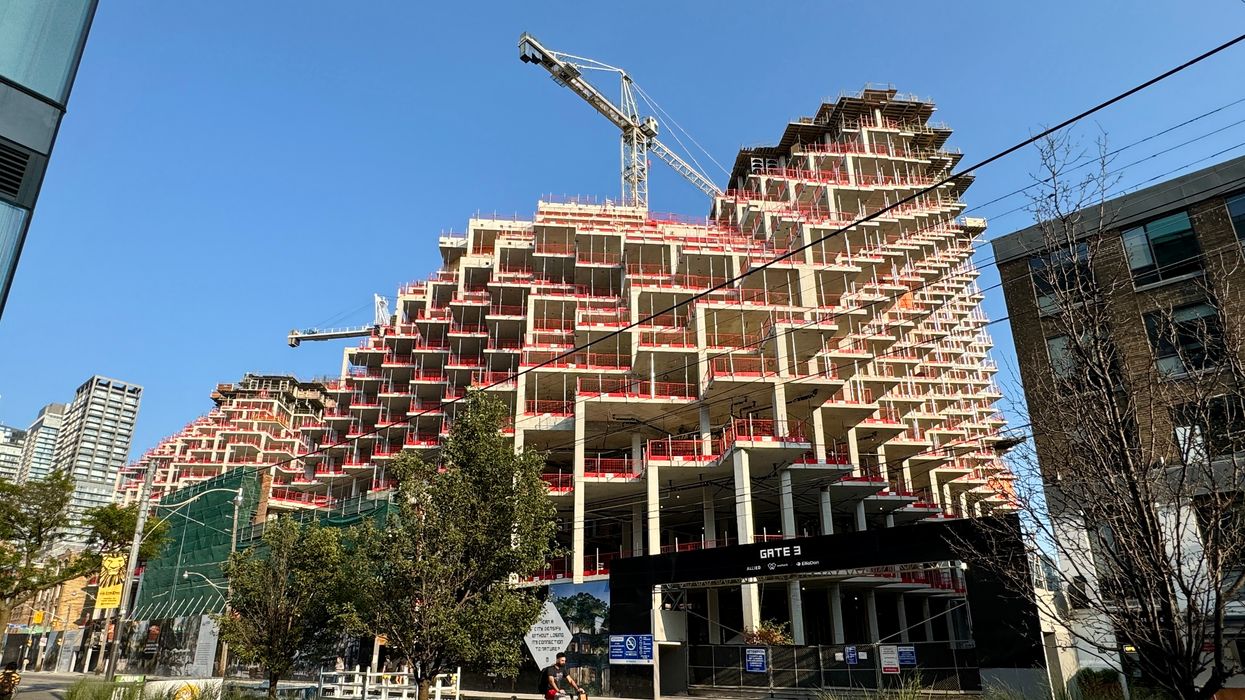Famed American inventor and statesman Benjamin Franklin once opined that nothing is certain except death and taxes.
He was right, of course.
Taxes, for instance, are an inevitable and unavoidable part of building and buying a new home. So are the seemingly endless list of levies, fees, development charges and costs for purchasing land, seeking planning approvals, acquiring permits, and bringing equipment to a construction site.
Additionally, there are financing and interest costs, not to mention costs for materials and labour. The charges are pushing outlays for homebuilding and ownership to unsustainable levels. CMHC identified, on average, nine to 10 different government charges on new development.
Pardon the pun, but taxes, fees, and levies alone, combined with protracted and costly development approvals have, in half a generation, jacked new housing costs through the roof.
Toronto is in the unenviable position of having the highest average government charge in Canada, across all dwelling types, at $86 per square foot. A 2019 report found that government fees, taxes, and charges added $222,000 to the cost of an average new single-family home in the GTA, three times higher than San Francisco, Miami, Boston, New York City, Chicago and Houston.
The add-ons contribute a jaw-dropping 31% to the cost of a new home – equivalent to a downpayment, according to a report prepared by the Canadian Centre for Economic Analysis.
The fees have risen dramatically over the years. Most of the fees go to governments. But it’s akin to buying a bigger bag of potato chips. You’re getting more air, but not a corresponding amount of chips.
The scale and scope of the housing crisis – and the fees associated with building new homes – is often not fully understood.
Development charges, for instance, are charged when shovels for a project go in the ground. Builders and developers must fork out the cash in advance and carry the costs until the project is completed and the cost is recouped from the buyer. Builders and developers must finance the carrying costs. The result is a higher price tag for the home, which is paid by the consumer.
The charges are a major reason for the increase in prices. In 2009, development charges were relatively modest in the City of Toronto, but they’ve been on an upward trajectory ever since.
For example, the charges for a single and semi-detached home were $12,366 in 2009 and by 2024 they were $117,169. In 2009, the charges for a one-bedroom and bachelor apartment unit were $4,985 and for a two-bedroom apartment unit they were $8,021. In May 2024, they rose to $44,774 and $68,587, respectively.
Today, in a 500-unit building, if the charges were equally split between one- and two-bedroom units, the cost would be $28.3 million – up from $3.3 million in 2009.
Meanwhile, Toronto has the second highest construction costs in the world. They increased a whopping 40% between 2020 and 2023.
Development charges, along with taxes, fees, and levies, have become a cash cow that governments now rely on to fund infrastructure and other amenities. But they are killing the market.
The fees must be reduced so the savings can be passed on to homebuyers. For starters, the federal and provincial governments need to introduce taxation measures, including a full rebate of HST to first-time homebuyers, and bring the fees down to a more manageable level.
A 2022 CMHC study of government charges on residential development in Canada’s largest metropolitan areas found that the presence of more government charges was associated with a longer development approval process and longer timelines to bring new supply to market.
It is critical to get a handle on this problem if we are to have any hope of solving the housing supply crisis. While the social ramifications of failing to build enough housing are tragic with people leaving our cities to go elsewhere, the economic consequences are equally threatening.
In a LinkedIn post, Julie Di Lorenzo, president at Mirabella Development Corporation, noted there are 45 fewer cranes up today in Toronto than last year and, based on 2021 data and a calculation of 350 new condo units per crane, that would translate to 72,000 fewer jobs and $4.7 billion less in wages in construction and other industries that provide goods and services, $67 million less in annual property tax revenue, and $2.7 billion less in one-time government revenue.
The figures put the economics of the problem in perspective.
In the midst of all of this, though, there is a glimmer of hope.
Some 54% of young Canadians aged 18 to 38 believe that owning a home is still an achievable goal, according to a Royal LePage survey, and 84% believe it’s a worthwhile investment.
40% of those planning to purchase a home have their timeline set within the next five to 10 years and nearly half of them are regularly setting some earnings aside to save for a downpayment.
So, there is reason for optimism.


















